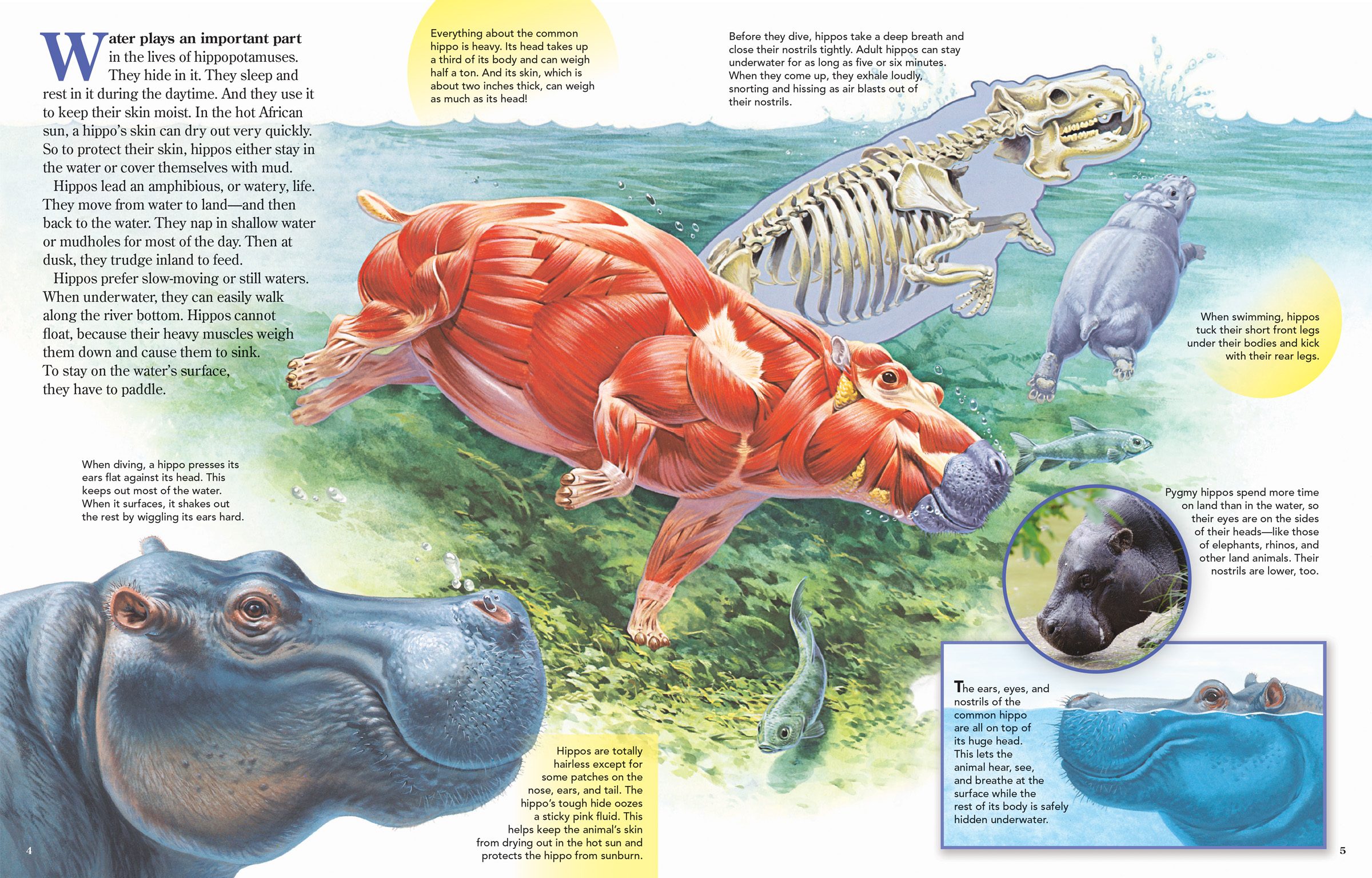
Everything About the Common Hippo is Heavy
ByWater plays an important part in the lives of hippopotamuses. They hide in it. They sleep and rest in it during the daytime. And they use it to keep their skin moist. In the hot African sun, a hippo’s skin can dry out very quickly. So to protect their skin, hippos either stay in the water or cover themselves with mud.
Hippos lead an amphibious, or watery, life. They move from water to land—and then back to the water. They nap in shallow water or mudholes for most of the day. Then at dusk, they trudge inland to feed.
Hippos prefer slow-moving or still waters. When underwater, they can easily walk along the river bottom. Hippos cannot float, because their heavy muscles weigh them down and cause them to sink. To stay on the water’s surface, they have to paddle.
Everything about the common hippo is heavy. Its head takes up a third of its body and can weigh half a ton. And its skin, which is about two inches thick, can weigh as much as its head!
When diving, a hippo presses its ears flat against its head. This keeps out most of the water. When it surfaces, it shakes out the rest by wiggling its ears hard.
Hippos are totally hairless except for some patches on the nose, ears, and tail. The hippo’s tough hide oozes a sticky pink fluid. This helps keep the animal’s skin from drying out in the hot sun and protects the hippo from sunburn.
Before they dive, hippos take a deep breath and close their nostrils tightly. Adult hippos can stay underwater for as long as five or six minutes. When they come up, they exhale loudly, snorting and hissing as air blasts out of their nostrils.
When swimming, hippos tuck their short front legs under their bodies and kick with their rear legs.
Pygmy hippos spend more time on land than in the water, so their eyes are on the sides of their heads—like those of elephants, rhinos, and other land animals. Their nostrils are lower, too.
The ears, eyes, and nostrils of the common hippo are all on top of its huge head. This lets the animal hear, see, and breathe at the surface while the rest of its body is safely hidden underwater.

